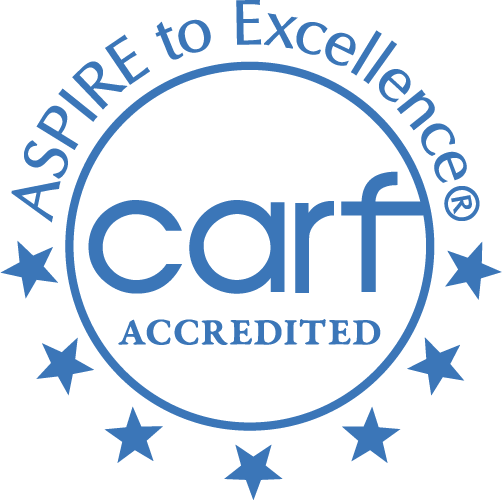Skip To Rehab Listing
With substance abuse treatment easily available, those struggling with alcohol and drug abuse can get assistance within their local area.
Addiction Recovery Facility Settings and Treatment Techniques In St. Ignatius, Montana
The settings of treatment facilities in St. Ignatius include the following: outpatient day treatment, short term drug and alcohol rehab centers, long term treatment facilities, inpatient detox centers, inpatient drug and alcohol rehab programs.
Those looking for treatment can find conveniently located centers nearby with a variety of rehab approaches made for successful rehabilitation. These techniques, which include both traditional and recently developed methods, include the following: motivational interviewing, individual psychotherapy, substance abuse counseling approach, couple/family therapy, dual diagnosis drug rehab, relapse prevention.
Programs Addressing Special Requirements for Drug and Alcohol Treatment
Addiction can differ based off of factors, such as the type of substance causing the addiction. Many recovery programs in the St. Ignatius region offer centers designed to customize rehabilitation to a patient's unique needs. These programs consist of the following: transgender or (LGBT) clients, persons with serious mental illness, clients referred from the court/judicial system, child care for clients children, seniors or older adults, substance abuse education.
Clients who are unsure what their needs are can reach out to these facilities to obtain client resources that can direct them toward the exact program.
Paying For Treatment - Payment Options & Alternatives
People struggling with alcohol and drug dependency come from varied economic conditions, but a range of financing alternatives makes rehabilitation economically accessible for anyone. Funding options include the following: private health insurance, private pay, medicare, medicaid, sliding fee scale, state corrections or juvenile justice funds, other state funds.
Individuals looking for rehab can get in touch with a rehab program to learn more about what payment options are available to them.
St. Ignatius's alcohol and drug centers, resources, and payment options give people who are struggling with alcohol and drug addiction an opportunity to start a sustainable recovery plan.
Commonly Asked Questions about Addiction and Treatment
What are the signs of liver damage from alcoholism?
Alcoholism, or Alcohol Use Disorder (AUD), can lead to liver damage over time as the liver struggles to process excessive amounts of alcohol. Liver damage due to alcoholism can manifest in various ways, with signs ranging from mild to severe. Some common signs of liver damage from alcoholism include:
- Jaundice: One of the most recognizable signs of liver damage is the yellowing of the skin and eyes, known as jaundice. This occurs when the liver is unable to properly process bilirubin, a waste product that accumulates in the body.
- Abdominal pain: Individuals with liver damage may experience pain or discomfort in the upper right abdomen, where the liver is located.
- Swelling in the abdomen: Liver damage can lead to the accumulation of fluid in the abdominal cavity, a condition known as ascites. This can cause swelling and discomfort in the abdomen.
- Fatigue: Impaired liver function can result in persistent fatigue, weakness, and a general lack of energy.
- Dark urine: Liver damage can cause the urine to become darker in color, often appearing brown or tea-colored.
- Pale or bloody stools: Individuals with liver damage may notice pale, clay-colored, or bloody stools, indicating that the liver is struggling to process waste products.
- Bruising or bleeding easily: The liver plays a crucial role in blood clotting. When the liver is damaged, it may struggle to produce adequate clotting factors, resulting in easy bruising or prolonged bleeding from minor cuts or injuries.
- Loss of appetite: Liver damage can lead to a decreased appetite or unexplained weight loss.
- Nausea and vomiting: Impaired liver function can cause feelings of nausea or even vomiting.
- Itchy skin: Liver damage can result in the buildup of bile salts in the skin, leading to itchiness and irritation.
- Spider angiomas: Some individuals with liver damage may develop small, spider-like blood vessels visible beneath the skin, known as spider angiomas.
- Confusion or disorientation: In advanced cases of liver damage, toxins that would normally be filtered by the liver can build up in the bloodstream and affect brain function, leading to confusion, disorientation, or even coma.
It is important to seek medical attention if you or someone you know is experiencing signs of liver damage from alcoholism. Early diagnosis and intervention can help prevent further damage and improve the chances of recovery. Treatment may include abstaining from alcohol, making lifestyle changes, and addressing any underlying health conditions contributing to liver damage.
Why are lgbtq+ individuals at higher risk for drug and alcohol abuse?
LGBTQ+ (lesbian, gay, bisexual, transgender, queer, and others) individuals are indeed at a higher risk for drug and alcohol abuse due to a variety of factors that often intersect and compound over time. These factors primarily relate to the stress and challenges associated with living as a marginalized group in many societies. Here are some of the main factors:
Minority Stress: This term refers to the chronic stress faced by individuals belonging to a stigmatized minority group. For LGBTQ+ individuals, this can stem from societal prejudice, discrimination, and violence related to their sexual orientation or gender identity. Such stressors can contribute to increased substance use as a coping mechanism.
Stigma and Discrimination: Experiences of rejection, exclusion, and maltreatment can increase feelings of anxiety and depression, which are associated with higher substance use rates. This can occur in various settings, including workplaces, schools, and even within families and social networks.
Internalized Negative Self-Perceptions: LGBTQ+ individuals may internalize societal biases and develop negative self-perceptions about their identity, leading to feelings of guilt, shame, and low self-esteem. These feelings can contribute to the misuse of substances as a form of self-medication.
Lack of Inclusive Healthcare: Many healthcare systems lack the resources or training to provide culturally competent care to LGBTQ+ individuals. This can make it difficult for these individuals to seek help or access effective treatment for substance use disorders.
Social Isolation: Feelings of isolation, which can be the result of rejection or non-acceptance by family, friends, or society, can increase the risk of substance use and misuse.
Intersectional Identity Stressors: LGBTQ+ individuals who also belong to other marginalized groups (like racial or ethnic minorities) may face additional stressors that can increase the risk of substance abuse.
How many people recover from drug addiction?
Recovery rates from drug addiction can vary significantly based on factors like the substance being used, the individual's overall health, the presence of co-occurring mental health disorders, the length and intensity of substance use, the quality of the treatment program, and the individual's level of engagement and commitment to recovery.
Estimating an exact recovery rate is challenging because of these variables and differing definitions of what constitutes "recovery." For some, recovery might mean complete abstinence from the substance, while for others, it might mean a significant reduction in use and an improvement in quality of life. Furthermore, recovery is often a lifelong process with potential for relapses, which may be part of the journey rather than a failure of treatment.
That said, numerous studies have shown that recovery is indeed possible. According to the U.S. Substance Abuse and Mental Health Services Administration (SAMHSA), about 10% of American adults have overcome a drug use disorder. Additionally, research in the field of addiction often cites that roughly 50% of individuals who remain in treatment for an extended period show significant improvement or recovery, with some studies showing even higher rates.
It's crucial to remember that even though the road to recovery can be difficult, help is available, and many individuals successfully manage their addiction and lead fulfilling, healthy lives. If you or someone you know is struggling with addiction, reaching out to healthcare professionals can be the first step toward recovery.













